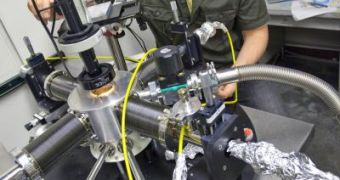Scientists from the US Department of Energy's (DOE) Lawrence Berkeley National Laboratory (Berkeley Lab) have recently developed a new method of increasing the electrical conductance of cadmium-selenide nanorod crystals by about 100,000 times. The advancement could have significant implications for future generations of nanocrystal-based solar cells, as well as for the production of renewable, liquid-transportation fuels.
“The key to our success is the fabrication of gold electrical contacts on the ends of cadmium-selenide rods via direct solution phase-growth of the gold tips. Solution-grown contacts provide an intimate, abrupt nanocrystal-metal contact free of surfactant, which means that unlike previous techniques for adding metal contacts, ours preserves the intrinsic semiconductor character of the starting nanocrystal,” the leader of the new research, Berkeley Lab Interim-Director Paul Alivisatos, explains.
The expert's research makes a lot more sense when understanding that estimates show the world's energy demands will double by 2050, and triple by 2090. Therefore, it's absolutely necessary that a network of high-output, carbon-neutral electricity networks be set in place, which would operate at a maximum efficiency. Alivisatos is a renowned international expert on nanocrystal growth. He currently works at Berkeley Lab's Materials Sciences Division, and at the University of California in Berkeley.
The scientist has also been the corresponding author of a new paper detailing the team's finds, published in the latest issue of the journal Nano Letters, and entitled “Enhanced Semiconductor Nanocrystal Conductance via Solution Grown Contacts.” Co-authors include research group colleagues Matthew Sheldon and Paul-Emile Trudeau, as well as Berkeley Lab Molecular Foundry expert Taleb Mokari, and Berkeley Lab Computational Research Division scientist Lin-Wang Wang.
“Our study shows that the superior performance of gold-tipped cadmium-selenide heterostructures results from a lower Schottky barrier and that solution grown contacts do not alter the chemical composition of the semiconductor. Further, our work demonstrates the increasing sophistication of high-quality electrical devices that can be achieved through self-assembly and verifies this process as an excellent route to the next generation of electronic and optoelectronic devices utilizing colloidal nanocrystals,” Alivisatos says.
“We believe our approach is an ideal strategy for making future devices from nanocrystals because it preserves the semiconductor character of the nanocrystal as synthesized with the precise control of their synthesis developed over the past decades,” Sheldon concludes.

 14 DAY TRIAL //
14 DAY TRIAL //